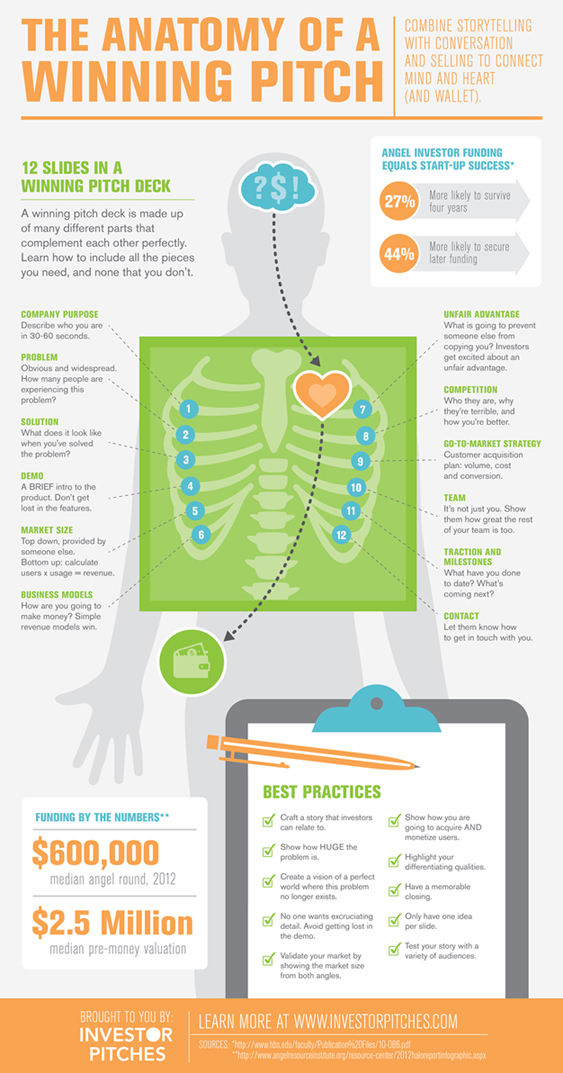It’s accelerator graduation season for Spring 2013 accelerator classes. That means it’s a good time to talk about pitch decks. Our good friends at investorpitches.com have put together “The Anatomy Of A Winning Pitch Deck” in a great, easy to follow infographic.
There seems to be a lot of different ways to build a pitch deck. We’ve seen over 25 accelerator demo days in the last year and for the most part each accelerator has a different way of teaching startup teams how to build the pitch deck. For the most part, what you’ll notice is that all of the startup teams at each accelerator follow the same model, but each accelerators model is different.
investorpitches.com has assembled their best practices for building pitch decks that work for investors. Of course they warn “include all the pieces you need, and none that you don’t”.
The biggest part of the pitch deck is to make sure you combine story telling and selling to connect the mind and the heart. No one wants to see any founder stand up on stage and just read a bunch of slides. Most people in the audience are capable of reading the slides themselves. What the person pitching needs to do is narrate the slides and we’ve them together.
In working with some of the teams in the Seed Hatchery accelerator this week, it brought me to one of my biggest tips when helping people prepare for the actual investor day pitch. “The confidence monitor can help you or kill you”. The confidence monitor is a great thing for getting your place in your pitch and reminding you what’s on the screen. But you can very quickly turn that into just reading the monitor and forget the story telling.
Chances are you wrote your pitch out, printed it out, practiced it with the print out, and then for the last week or two you’ve been practicing without the printout. Nothing changes on stage. Don’t let the confidence monitor kill your confidence.
The other big thing to remember in all of this is that investors aren’t there to evaluate your ability to put together a Keynote or Power Point presentation. They are there to evaluate your startup, it’s traction, it’s success and it’s potential. Above all, don’t forget to build a product.
Check out the infographic below for what should go into your pitch deck.








–
what is the best pitch for a new.space company?
That infographic is easier to understand than more articles written about pitch decks. Saving it! :)